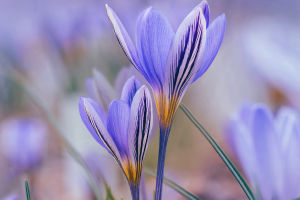A new type of characteristic agriculture, creative agriculture, originated in the late 1990s. Due to the innovative development of agricultural technology and the expansion of agricultural functions, tourism agriculture, leisure agriculture, refined agriculture, and ecological agriculture has developed one after another.
At the same time, the concept of creative industries has also been formed in countries and regions such as the United Kingdom and Australia and has rapidly expanded globally. With the help of the thinking logic and development concept of the creative industry, people effectively integrate technological and humanistic elements into agricultural production, further expand agricultural functions and integrate resources. Develop traditional agriculture into modern agriculture integrating production, life, and ecology, which is now called creative agriculture.
The practice and results of developing creative agriculture in some developed countries show that creative agriculture is not only an economic activity but also a high-level demonstration of agricultural civilization.
The development goal of creative agriculture is to endow agriculture with rich cultural connotations and creativity so that consumers can experience beauty and happiness from it. Among them, the Netherlands, Germany, the United Kingdom, and Japan have performed particularly well and achieved remarkable results, which will be explained in detail in this series.
The Dutch Model: High-tech Industrial Chain Integration
The Netherlands is a world-famous lowland country. One-quarter of the country's land is below sea level, and the per capita arable land area is only more than an acre. The relatively poor agricultural conditions have prompted the Netherlands to continue to innovate in agriculture, thus embarking on the road of creative agriculture and becoming the world's leading agricultural country, ranking third in the world after the United States and France.
The technological content of creative agriculture in the Netherlands is world-leading. Based on developed facility agriculture and precision agriculture, it intensively produces high-value-added greenhouse crops and horticultural crops and has a completely creative agricultural production system. The flower industry in the Netherlands is famous all over the world. The fundamental reason is that the research and development of the flower industry are very prominent. The development strategy of the flower industry is centered on technology, emphasizing moderate-scale operation, highly intensive management, developing high-tech products, and occupying the commanding heights of technology.
Creative agriculture in the Netherlands has an outstanding economic function of earning foreign exchange. The yield per unit of many agricultural products in the Netherlands ranks among the top in the world, and the export value of tomatoes, potatoes, and dried onions ranks first in the world. The Netherlands is the world's largest producer of mushrooms, dairy products, eggs, and flowers. 67% of the world's flower import and export trade comes from the Netherlands.
Since the 1990s, the annual net export value of agricultural products from the Netherlands has remained at more than 13 billion US dollars, accounting for about 10% of the world agricultural trade market share. The Netherlands ranks first in the world in foreign exchange earnings per capita in agricultural exports.
Pursuing innovation and strengthening the integration of the industrial chain is the secret to the formation of a complete and developed creative agriculture in the Netherlands.


